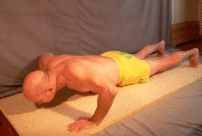|
This post is popular, but I also wanted to point out an updated 18 steps to get rid of Plantar Fasciitis.
I’ve been enduring the pain of Plantar Fasciitis in my heel for most of this training cycle. When I first started feeling the pain I took almost a week off. While the pain has never gone away it does ebb and flow. It hurts the most in the mornings and then kind of tapers off throughout the day, likewise at the beginning of a run it hurts and then loosens itself up. Some days the pain is worse than others. I’ve been icing and popping pills throughout.
As the weather has gotten nicer and I’ve been biking, I decided to see what the research said about biking and Plantar Fasciitis. I didn’t want to make it worse by biking. Fortunately, biking seems to be okay – but running and walking aren’t.
One thing that the resources I present below don’t talk about is checking your shoes – ensuring that your shoes haven’t been overused, in mileage or showing excessive wear. I also found previously that I needed to check all my shoes – even casual and business ones. A few years ago my work shoes were really worn down in the heels and I couldn’t figure out why my heels hurt so much. I switched shoes and the pain quickly went away. We spend a lot of time in our casual/work shoes – ensure they are working properly as well.
I love some of the simplicity of these ideas and the humor as well. There are plenty of good tips though.
I found a website called Heel Spurs that lists a few simple treatments for Plantar Fasciitis:
- Stretching,
- Ice,
- Tape,
- Rest,
- Arch support, and
- Losing weight
Another website for North Coast Foot Care provides some more in-depth ideas:
- Stop running, jogging or walking. Swim or bike instead.
- If you work out on a treadmill, stop! This is the worst activity for your heels.
- Avoid the stair stepper. The stair stepper puts a lot of stress through your arch.
- If you are up and down at work a lot, try to limit it, and get up only once an hour, or once every 2 hours.
- At home, avoid going up and down the stairs multiple times. Have your spouse, significant other or child run up or down for you.
- Try to avoid steep hills. Stairs are better than hills. Walking up the stairs sideways will help take the stress off your feet.
- Do not lift or carry heavy items. This adds to the total amount of force that goes through your feet. This also increases the total impact on your heel.
- Do not lift your kids and carry them. Use a stroller, have them walk, or let your spouse/significant other carry them.
- Don’t lift weights. If you do, make sure you are seated
- The EFX (elliptical) machine at the gym can also aggravate plantar fasciitis. If you must exercise with this, lower the platform adjustment to it’s lowest level.
As well as some specific ideas for athletes:
- The best approach is to rest the foot for 10-14 days.
- Cross train by road or mountain biking, swimming or weight lifting.
- Do all the therapy outlined on the about heel pain page.
- Be aggressive about this treatment, stretching as much as possible throughout the day and
- Icing or contrasting between hot and cold as much as your schedule allows.
- Swim for exercise, or bike at low resistance at the gym and avoid the recumbent bike. If you bike outside, spin up the hills (use the lowest gears). Of course it is better to avoid hills if possible. Do not drop your heel while cycling, this puts excess stress through the Achilles tendon and the arch. Wear cycling shoes, or rigid shoes while cycling.
- Consider weight lifting. Avoid standing while lifting weights. Avoid squats, calf lifts and quad bench presses. There are many areas that we tend to avoid when we focus on specific training, especially the upper body. Try to readjust your focus for a few weeks.
- If you have pain at any time during the return, taper your routine accordingly. If you have a small amount of pain, then don’t increase the mileage or intensity, or give it a day’s break to rest and ice and stretch. If you have a lot of pain when you return, then you should take a full two weeks off from the activity and see your physician to consider more aggressive therapy. Physical therapy and orthotics would be good treatments to add.
I will say I’ve felt the best on Monday’s after swimming and sitting in the hot tub on Sunday mornings and any day after resting. I’ve continued to stretch and ice, occasionally taking some ibuprofen, but other than that I’ve not done a good job of taking care of my heel! After the half-marathon I plan on taking some time off and letting it heel some more!!
What have you done to treat Plantar Fasciitis?
[tags] Plantar Fasciitis, Heel, Injuries, Running [/tags]

![Reblog this post [with Zemanta]](https://i0.wp.com/img.zemanta.com/reblog_e.png?w=625)


 That is the plan. Doing a prescribed set of push-ups 3 days a week for 6 weeks should allow you to complete 100 push-ups in a row. That is the claim of the latestet Internet fitness revolution. Bloggers (and non-bloggers) everywhere are taking part in the
That is the plan. Doing a prescribed set of push-ups 3 days a week for 6 weeks should allow you to complete 100 push-ups in a row. That is the claim of the latestet Internet fitness revolution. Bloggers (and non-bloggers) everywhere are taking part in the